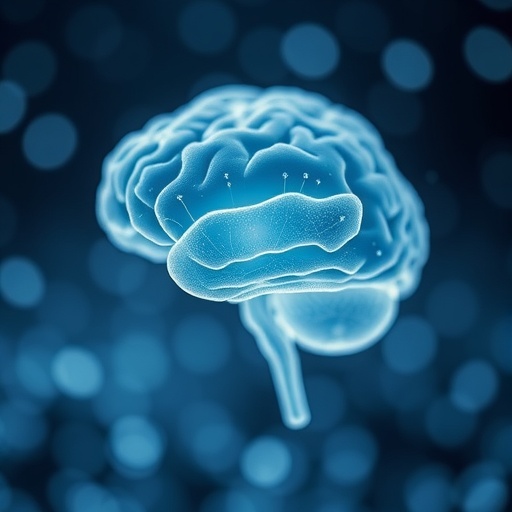Depression remains one of the most pervasive and debilitating mental health disorders, impacting over 280 million individuals globally as we approach 2025. Characterized by pervasive lethargy, disrupted sleep patterns, social withdrawal, and an increased risk of suicide, depression exacts a heavy toll on both personal well-being and societal productivity. Despite decades of research and an array of pharmacologic interventions, effective treatments still elude many patients, especially those unresponsive to conventional antidepressants targeting neurotransmitter systems like serotonin. Now, groundbreaking research from the Institute for Basic Science (IBS) unveils a novel molecular mechanism underlying depression, broadening the horizon beyond neurotransmitter modulation and illuminating unprecedented therapeutic avenues.
At the heart of this pioneering study lies the exploration of glycosylation — a ubiquitous post-translational modification wherein oligosaccharide chains attach to proteins, influencing their folding, stability, and function. While glycosylation’s role in cancer, viral infections, and neurodegenerative diseases has been extensively documented, its implications in psychiatric disorders have remained largely uncharted. The IBS research team, led by C. Justin LEE and Boyoung LEE, focused specifically on O-glycosylation — a subtype involving the attachment of sugar moieties to serine and threonine residues on proteins — within brain tissue. Utilizing an integrative multi-omics strategy, including high-resolution mass spectrometry, they systematically characterized regional O-glycosylation patterns across nine distinct mouse brain regions, establishing a foundational glycome atlas under physiological conditions.
This comprehensive mapping revealed unique glycosylation signatures tailored to each brain region, underscoring the nuanced biochemical landscape of neural structures. However, when subjected to chronic variable stress — a well-validated mouse model mimicking human depression — these glycosylation profiles exhibited dramatic alterations, particularly within the medial prefrontal cortex (mPFC), a region critically implicated in mood regulation and executive function. The stressed animals demonstrated a marked reduction in sialylation, the terminal addition of sialic acid residues on glycans, a modification known to enhance protein stability and mediate cell-cell interactions.
Concomitant with this sialylation deficit, the researchers observed a significant downregulation of St3gal1, a sialyltransferase enzyme vital for appending sialic acid to O-glycans. This correlation prompted functional interrogation of St3gal1’s role in depressive phenotypes. Through sophisticated viral-mediated gene manipulation techniques, they selectively suppressed St3gal1 expression in the mPFC of unstressed mice, which sufficed to induce hallmark depressive-like behaviors, including diminished motivation and heightened anxiety, thereby phenocopying the stressed condition. Conversely, restoring or overexpressing St3gal1 in stressed mice alleviated these behavioral disruptions, firmly establishing a causal link between St3gal1-mediated glycosylation and mood regulation.
Delving deeper into the molecular substrates affected, the team identified key synaptic proteins, notably neurexin 2 (NRXN2), whose glycosylation patterns were destabilized due to diminished St3gal1 activity. Neurexins serve as pivotal synaptic adhesion molecules, orchestrating synapse formation and maintenance across neuronal cell types. Disrupted glycosylation perturbed NRXN2’s structural integrity, impairing inhibitory neuronal circuits that are crucial for maintaining excitatory-inhibitory balance within the mPFC. Electrophysiological analyses corroborated these findings, demonstrating attenuated synaptic inhibition and compromised neuronal network stability, which collectively undermine the brain’s capacity to regulate emotional responses effectively.
These results illuminate a previously unrecognized pathological axis wherein aberrant O-glycan sialylation precipitates synaptic dysfunction and neural circuit disarray, culminating in depressive-like behaviors. The mechanistic insights gleaned offer a paradigm shift from neurotransmitter-centric models of depression to a broader biochemical framework incorporating protein post-translational modifications as critical modulators of neuropsychiatric health. This study thereby paves the way for innovative diagnostic markers and intervention strategies, such as modulating specific glycosyltransferases or stabilizing glycan structures to restore synaptic homeostasis.
Research Fellow Boyoung LEE emphasizes that the implications of this work extend beyond depression alone, highlighting potential relevance to other neuropsychiatric disorders sharing circuit-level dysregulation, including post-traumatic stress disorder (PTSD) and schizophrenia. Director C. Justin LEE articulates hopes that exploiting glycosylation pathways may yield next-generation therapeutics capable of overcoming the limitations of current antidepressants, which suffer from suboptimal efficacy and undesirable side effects.
The translational potential of targeting O-glycan sialylation is especially compelling given the specificity of enzymatic modifications and the feasibility of molecular interventions via gene therapy or small-molecule modulators. Future investigations will be essential to delineate the glycoproteomic landscape in human depression, validate biomarkers of altered glycosylation, and assess the safety and efficacy of manipulating these pathways in clinical contexts.
Published in the prestigious journal Science Advances in October 2025, this study represents a landmark contribution to neuropsychiatric research. By integrating cutting-edge mass spectrometry techniques with behavioral neuroscience and molecular biology, the IBS team demonstrates how intricate biochemical modifications can exert profound influences on brain function and behavior. As depression continues to impose a staggering social and economic burden worldwide, such mechanistic revelations are invaluable, offering renewed hope for patients and clinicians alike.
In summary, abnormal O-glycan sialylation in the medial prefrontal cortex emerges as a critical molecular determinant of depressive-like behaviors in male mice, highlighting disrupted St3gal1 expression as both a biomarker and therapeutic target. This novel insight transcends traditional neurotransmitter-based paradigms and lays the groundwork for glycosylation-focused interventions that may revolutionize mental health treatment in the years to come.
Subject of Research: Animals
Article Title: Abnormal O-Glycan Sialylation in the mPFC Contributes to Depressive-like Behaviors in Male Mice
News Publication Date: 3-Oct-2025
Web References: 10.1126/sciadv.ady2733
Image Credits: Institute for Basic Science
Keywords: Depression, Affective disorders, Psychiatric disorders, Mental health, Clinical psychology, Prefrontal cortex, Nervous system, Glycosylation, Cellular processes, Sialylation, Electrophysiology, Neurotransmitters, Serotonin, Anxiety, Post traumatic stress disorder, Schizophrenia




